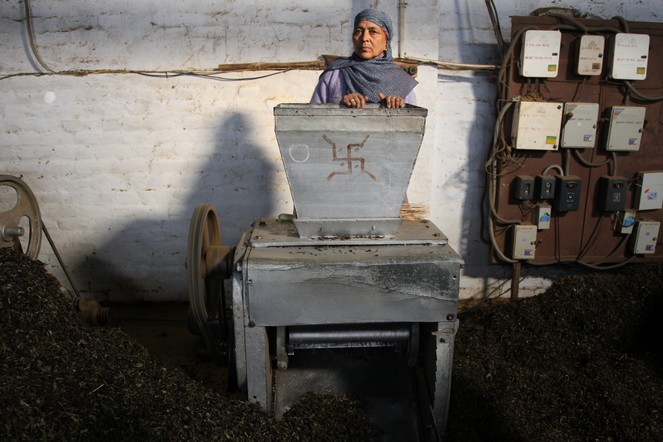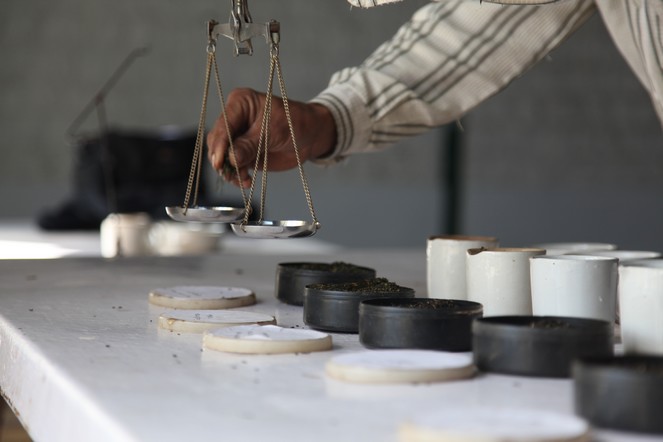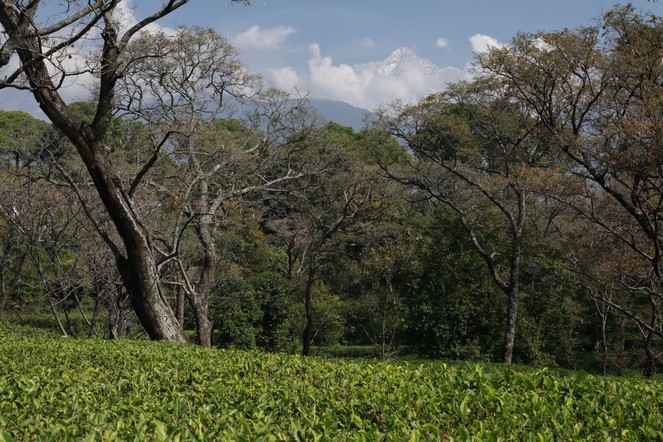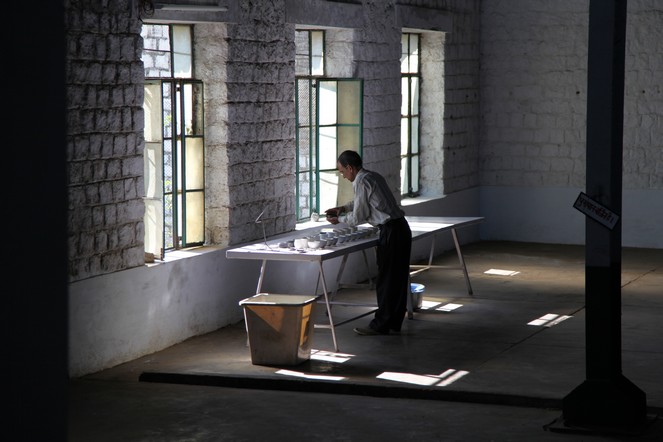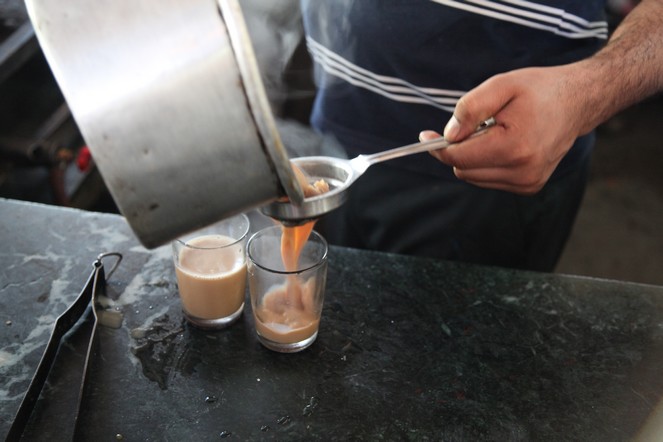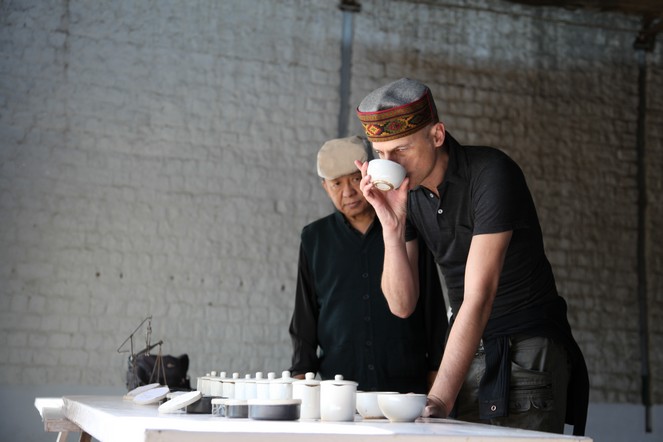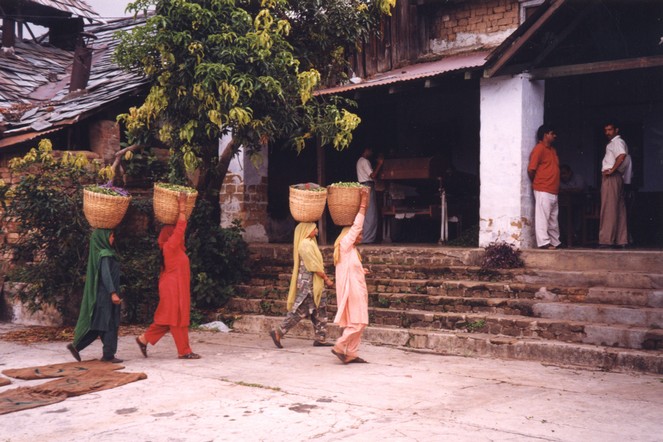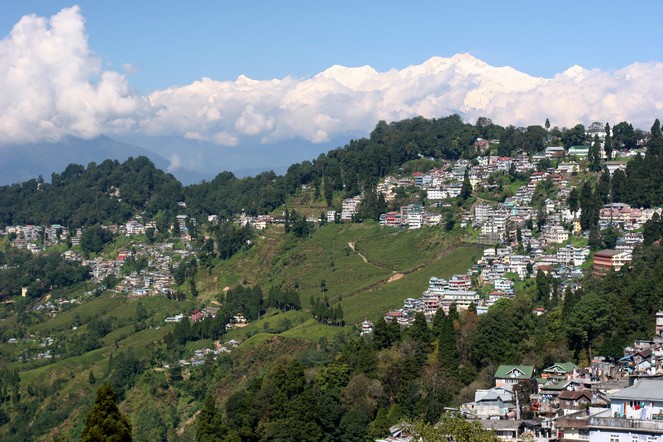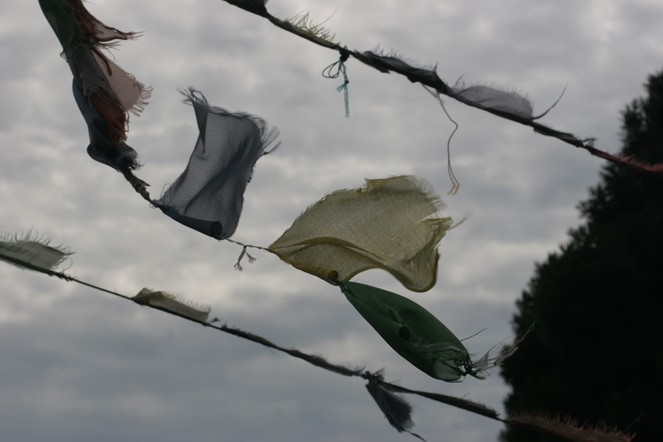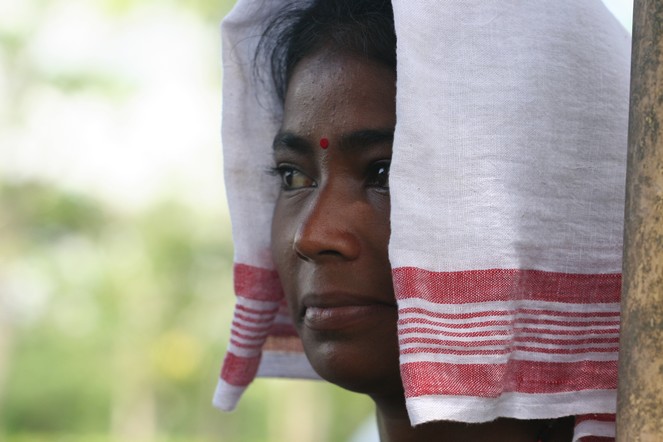Sometimes you find green particles in black tea that are not the pale-green buds that often accompany a fine pluck.
The particles I’m talking about here come either from the rolling process, if the leaves get slightly broken, or when leaves that are a bit too big are put through a machine like this one, to make them smaller. Note the serious expression of this worker, who appears to blend in with her machine.
Measuring the tea carefully for tastings
When you make yourself a cup of tea, you naturally don’t need to measure out the leaves to the nearest milligram.
It’s not the same for me. At each comparative tasting the tea must be weighed with the utmost precision, otherwise I can’t assess each liquor properly.
The Dhauladhar Mountains
The tea plantations in the Kangra region are dominated by a beautiful mountain range, the Dhauladhar. Its highest peak is 5,000 metres and it has cold winters that I don’t find unpleasant. This improves the quality of the spring harvest.
Concentrating on the aromas and flavours of tea
Tea tasting requires nothing more than a table, fresh water brought to the correct temperature, an attentive assistant and good light.
A peaceful place like this one helps you concentrate on the essentials: the tea’s aromas and flavours.
Spiced tea along Indian roadsides
All along the roadsides in India there are many stalls serving delicious spiced tea. The flavour varies according to the mood of the person preparing it and the clientele’s preferences.
Here, near Jammu (India), I’m about to taste the local brew. I’m particularly looking forward to it as I don’t often come to Kashmir. I can’t wait to discover the flavour they give their chai around here.
Tasting in Dharamsala
A tasting session at the Manjhee Valley Tea Estate in the company of its manager, Chettaranjan Rai. The Manjhee Valley Tea Estate is in Dharamsala and produces some of the best teas in the region.
Before this, Chettaranjan worked for more than 10 years on tea plantations in Darjeeling, and is extremely experienced. Here, he is watching me closely, waiting to see what I think of his production.
Trip to Himachal Pradesh (India)
I’m on my way to Dharamsala, Palampur and Baijnath, three towns in Himachal Pradesh (India). I haven’t visited this tea-producing region, near Kashmir, for 12 years.
The plantations in this region date back to the British colonial era; they are the same age as those of Darjeeling. In 1905, a terrible earthquake saw the settlers flee, but the plantations still exist.
The soil is as good as it is in Darjeeling, and the climate suits the tea plant, so it is time to see if the quality has improved in those parts, and whether we may at last one day taste fine teas from the region.
Darjeeling: the dream and the reality
This is a rather idyllic view of Darjeeling: a charming town with plenty of green space, spread out among the tea plantations in the Himalayan foothills.
The reality is more complex: the city has more than 100,000 inhabitants and spreads out much further than can be seen here. The roads are crumbling, all the city’s water has to be trucked in, and the traffic increases every year, making it very congested.
Departure for India
This morning I took off for India.
I’m not yet travelling on a prayer mat or on one of these flags fluttering in the wind, but that doesn’t mean I am not unmoved by the intense mystique of this country, its poetry.
These materials you see here symbolise the sky, the earth, water, fire and air, depending on their colour. On each of these flags are printed prayers that are carried off by the wind.
Trouble in Assam
The state of Assam (India), the country’s main tea-producing region, is going through a difficult period.
Security has been an issue here for years. I don’t want to go into the detail of the reasons behind the violence. I don’t know enough about it. I just want calm restored, like the lovely calm expression on this Assam tea plucker’s face.
The red and white fabric she wears wrapped around her head is typical of women in the region.

